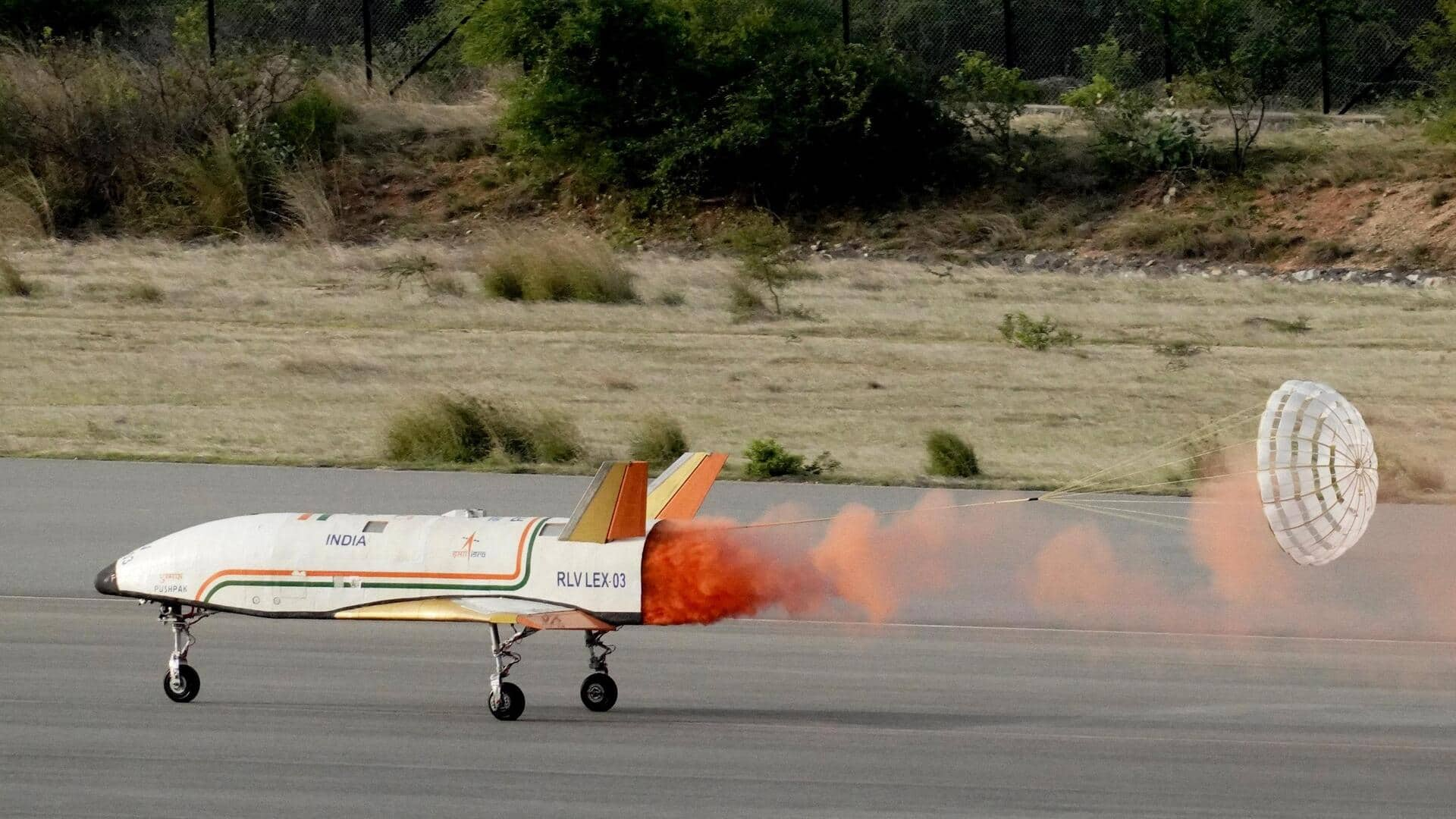
ISRO completes third reusable launch vehicle test: Know its significance
What's the story
The Indian Space Research Organisation (ISRO) has successfully completed the third test in the Reusable Launch Vehicle Landing Experiment (LEX-03). This test demonstrates the autonomous landing capability of the launch vehicle under challenging conditions. The mission simulated high-speed landing scenarios for a vehicle returning from space, reiterating ISRO's expertize in acquiring critical technologies required for developing a Reusable Launch Vehicle (RLV). The third, also the final test, was conducted at the Aeronautical Test Range (ATR) in Chitradurga, Karnataka.
Test details
'Pushpak' demonstrated autonomous landing under challenging conditions
The winged vehicle, dubbed 'Pushpak,' was released from an Indian Air Force Chinook Helicopter at an altitude of 4.5km. ISRO reported that "Pushpak autonomously executed cross-range correction maneuvers, approached the runway, and performed a precise horizontal landing at the runway centreline." The vehicle's aerodynamic configuration resulted in a landing velocity exceeding 320km/h, more than a commercial aircraft (260km/h) and even a typical fighter aircraft (280km/h). ISRO said the vehicle's speed was reduced to nearly 100km/h using its brake parachute post-touchdown.
Tech advancement
Validating advanced guidance algorithm for future missions
Following the landing, the vehicle's landing gear brakes were employed for deceleration and stop on the runway. During this phase, 'Pushpak' utilized its rudder and nose wheel steering system to autonomously maintain a precise and stable ground roll along the runway. ISRO noted that this mission validated an advanced guidance algorithm crucial for future Orbital Re-entry Missions. The RLV-LEX-03 mission reused flight systems from the LEX-02 mission, demonstrating ISRO's capability of design to reuse flight systems for multiple missions.
Team achievement
ISRO chairman congratulated team on successful mission
The mission was led by the Vikram Sarabhai Space Centre (VSSC) and involved multiple ISRO centers. It received significant support from various Indian institutions, including the Indian Air Force (IAF) and the Indian Institute of Technology (IIT), Kanpur. S Somanath, chairman of ISRO, congratulated the team for maintaining the success streak in such complex missions. Dr S Unnikrishnan Nair, Director of VSSC, emphasised that this consistent success futhers ISRO's confidence in critical technologies essential for future orbital re-entry missions.
Twitter Post
Take a look at ISRO's post
ISRO achieved its third and final consecutive success in the Reusable Launch Vehicle (RLV) Landing EXperiment (LEX) today. "Pushpak" executed a precise horizontal landing, showcasing advanced autonomous capabilities under challenging conditions. With the objectives of RLV LEX… pic.twitter.com/3QIR9rsEkx
— ANI (@ANI) June 23, 2024